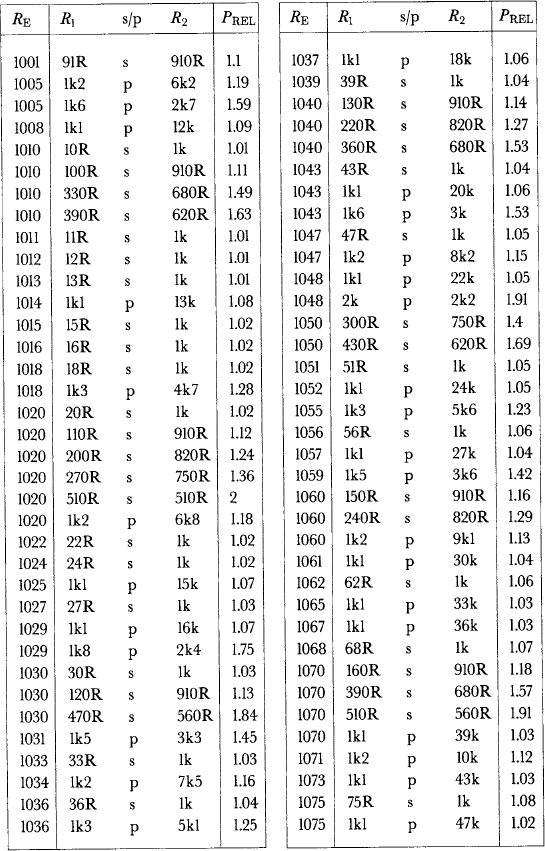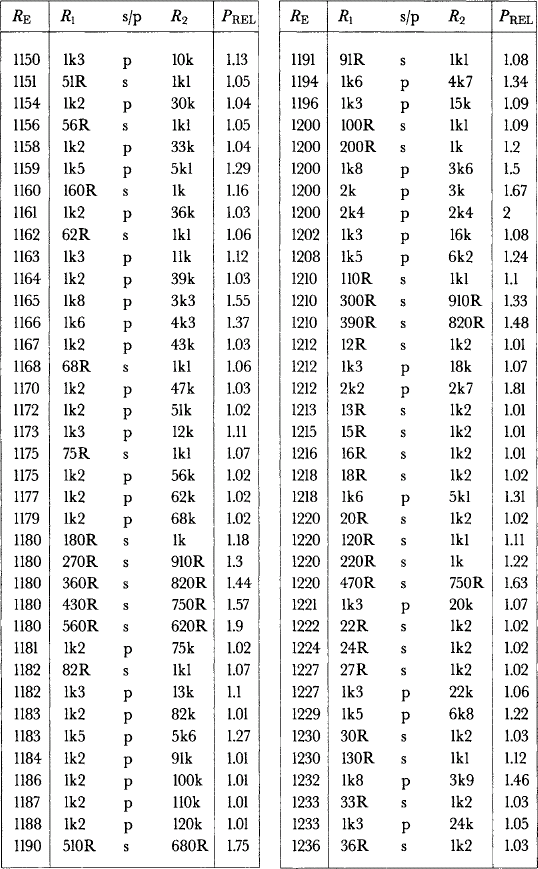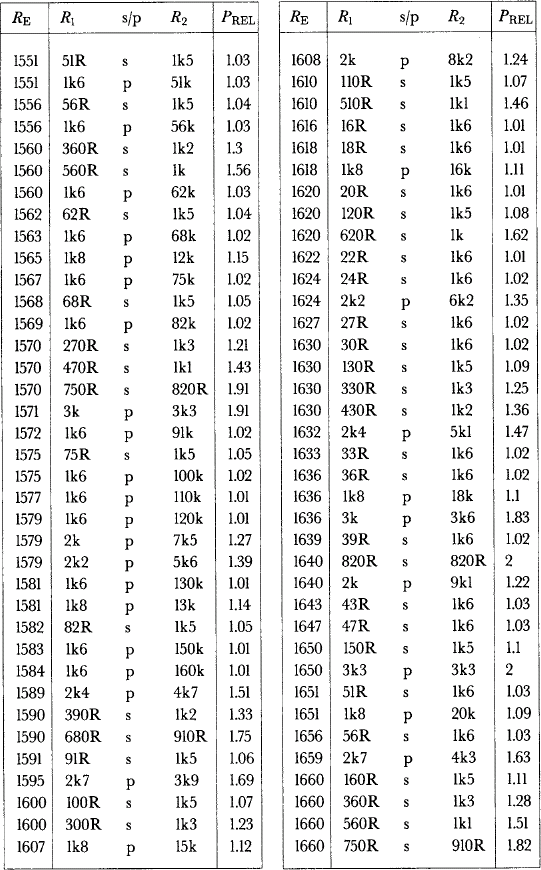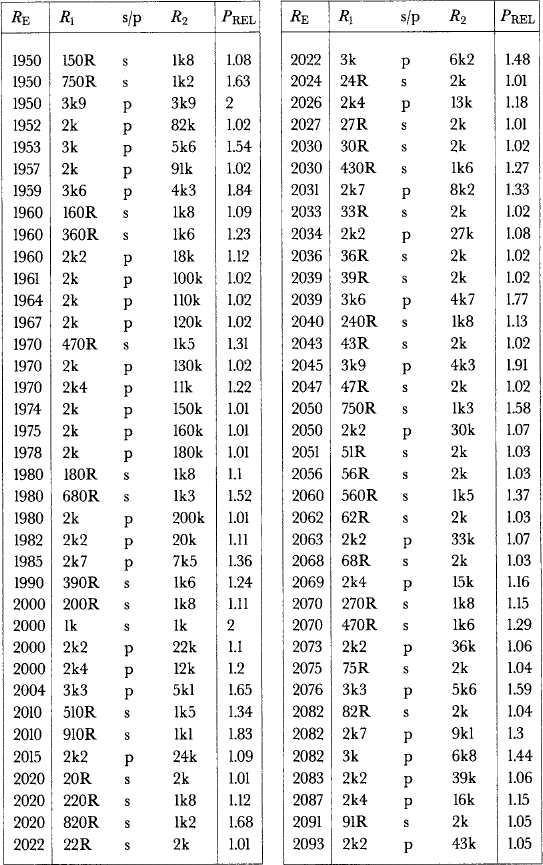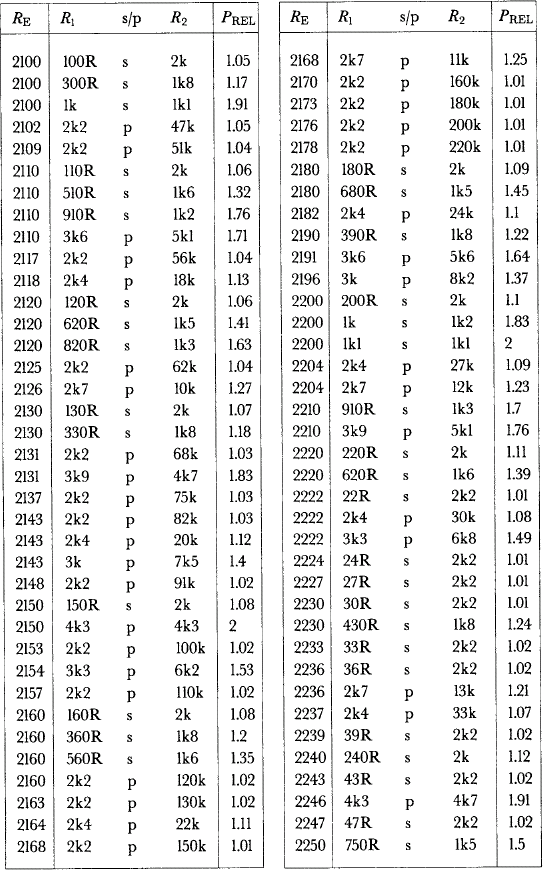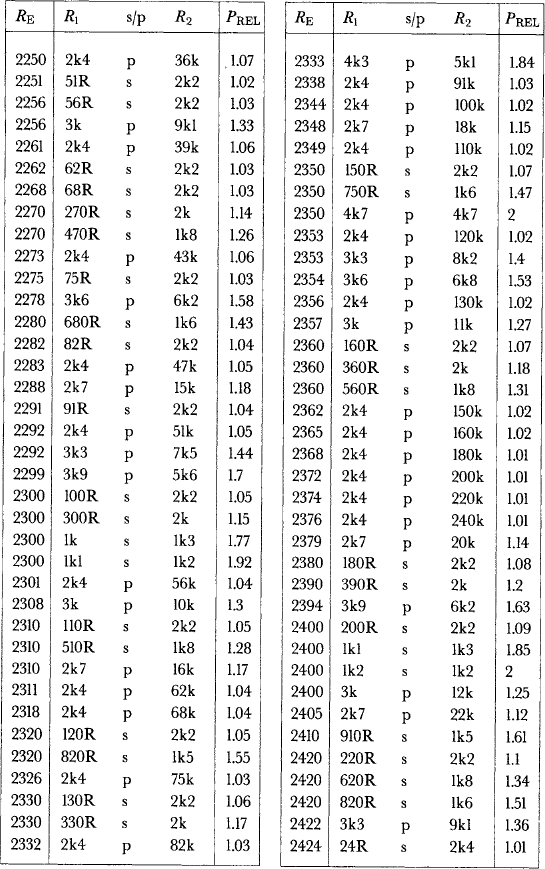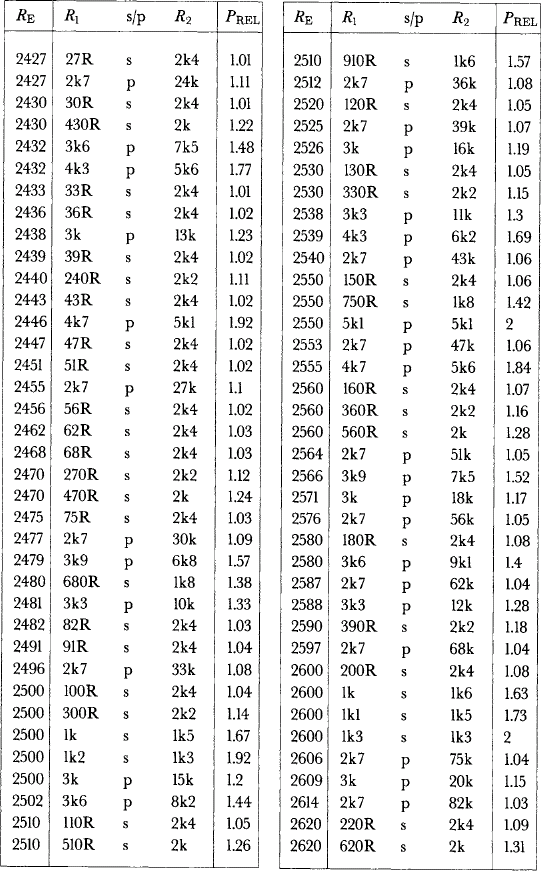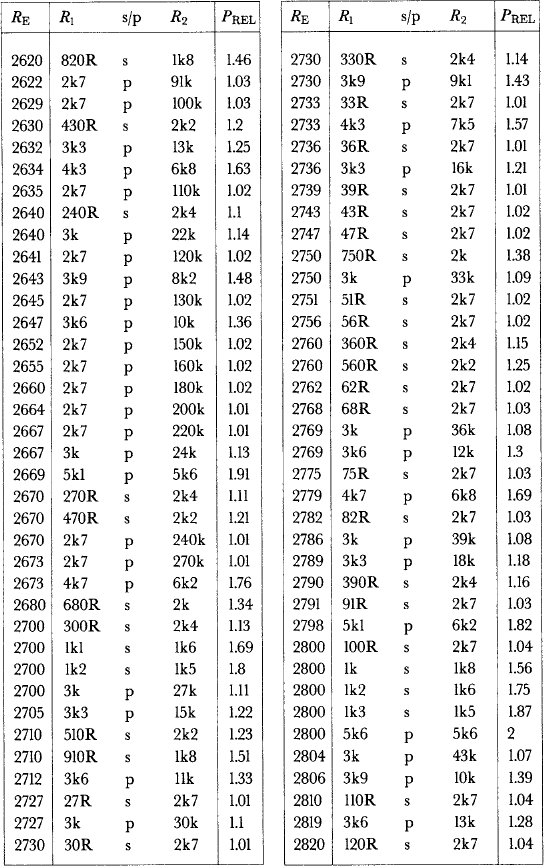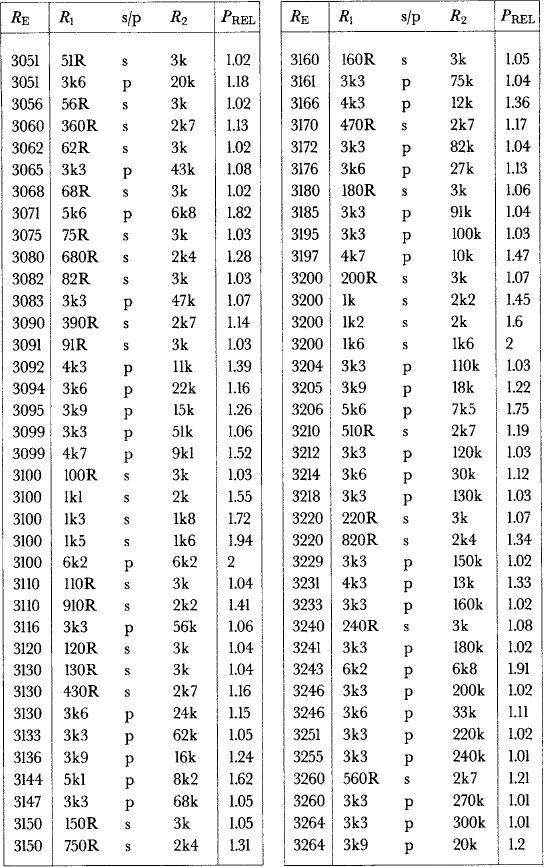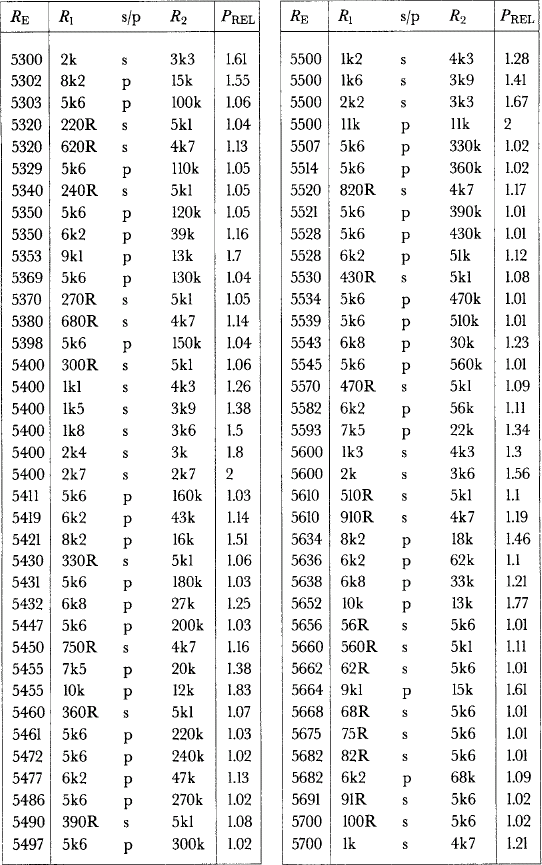Equivalent resistances
Introduction
Resistors can be bought in certain standard values. The ranges of values are commonly called the E6, the E12 and the E24 series, the numbers denoting the quantity of values per decade of resistance. For building or repairing low voltage electronic circuits most workshops will stock a full range of E12 or E24 miniature resistors (i.e. 1/8 Wor 1/4 W power rating), usually 1 or 2% tolerance, plus a selection of resistors rated at higher powers, which are available in combinations of E6 and E12 values. An additional range, E96, is also available, but these are more expensive, 0.1 % tolerance, and few workshops will stock them as standard due to the large number of values. Also they are hard to obtain below 100 Ω or over about 250k.
The standard values are almost always fine, but once in a while you need a value that lies between two of them. This can be achieved by combining two components in series or parallel, their values being chosen so that the overall equivalent is near enough.
It is evident that choosing the best pair of resistors for this purpose might involve a fair amount of trial and error with a calculator, and that several near solutions might exist. For this purpose, three ‘Tables of equivalent resistance’ are provided in the rest of this chapter. Table 6.1 is for E6, Table 6.2 for E12, and Table 6.3 for E24. You should use the appropriate one for the range of components which you intend to use.
Using the Tables for resistors
Each table shows all achievable values between 1k and 10k with two resistors. s denotes series connection and p denotes parallel. The tables are sorted in order of ascending equivalent resistance.
There are plenty of others that would be close enough too.
To get a value of less than 1k, or greater than 10k, you should scale all values by factors of ten as necessary.
Maximum power rating of the pair
Each line of the table gives a value of PREL. Where each resistor of the pair is of the same power rating, this can be used to find the overall power rating of the pair. It is always a number between 1 and 2. For example, if a pair of 1/4 W resistors are used and PREL has a value of 1.2 then the power rating of the pair is equal to:
In this way, the pair of resistors can be lumped and considered as a single circuit element.
Tolerance of components
If two components of the same tolerance are used the tolerance of the equivalent resistance is the same.
Using the Tables for capacitors and inductors
Both inductors and capacitors are normally bought in combinations of the standard E6 and E12 ranges. Like resistors, they can be combined in series or parallel to obtain non-standard values. As was discussed in Chapter 2, inductors in series and parallel obey the same rules as resistors, while capacitors in series behave like resistors in parallel, and vice-versa.
Hence, the tables can be used to find equivalent capacitance or inductance. For capacitors, you should read p for s and s for p.













